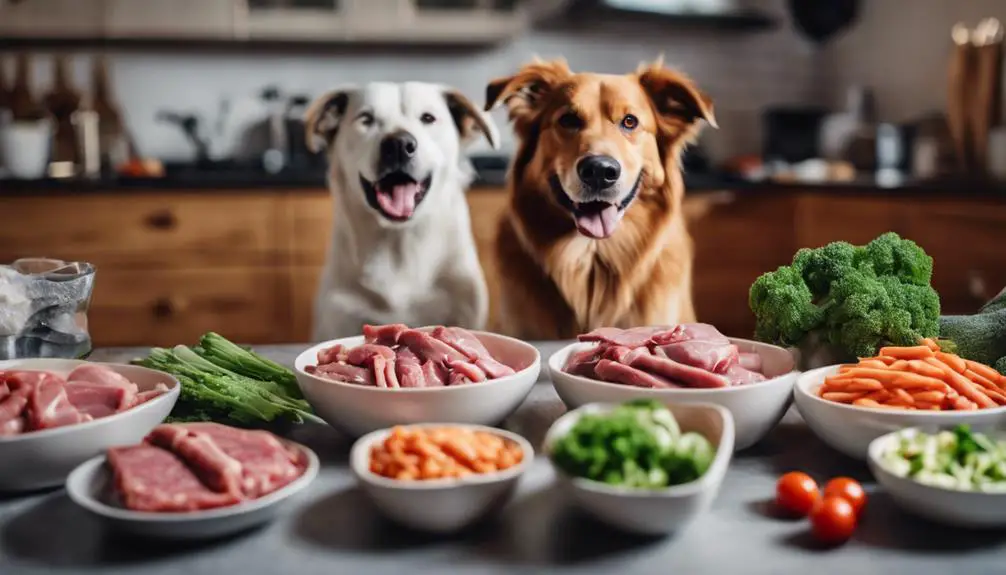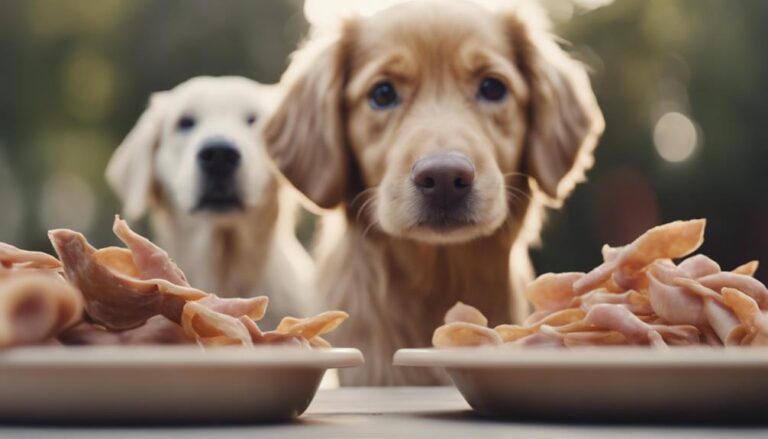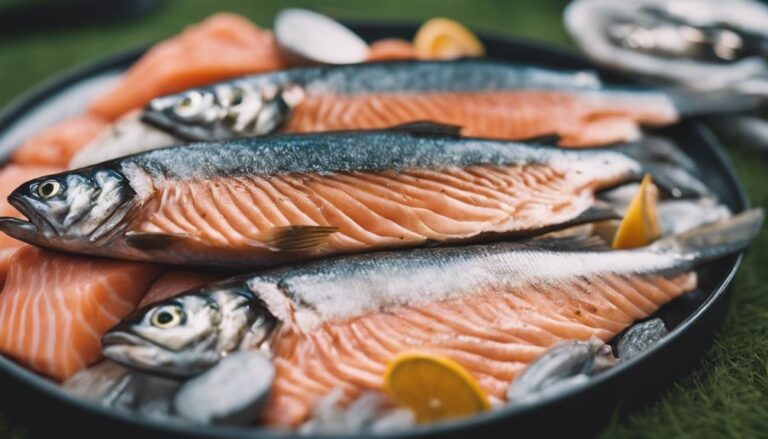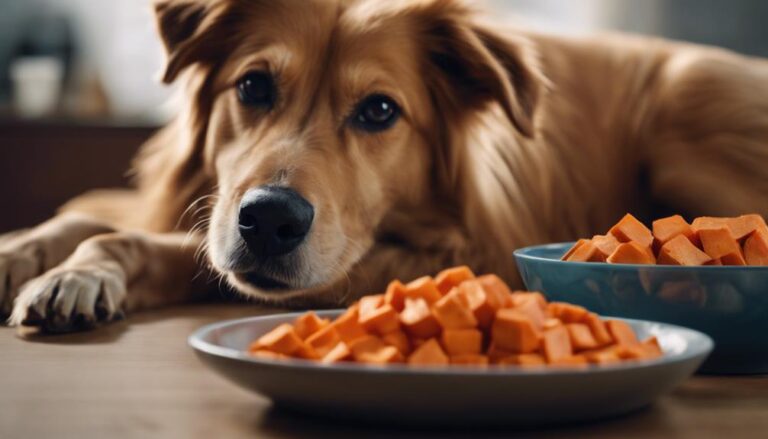How Can Dogs Eat Raw Food
If you're considering feeding your dog raw food, remember to gradually introduce it with their regular diet. Monitor how they react and adjust ratios accordingly. Make sure to follow a changeover guide for adjusting percentages smoothly. It's crucial to help their digestive system adapt to the change. By doing this, you can guarantee a smooth shift to a raw food diet. Embrace the benefits of raw food while being mindful of potential risks as well. This way, you can prioritize your dog's health and well-being effectively.
Key Takeaways
- Gradually transition by mixing raw meat with regular food.
- Monitor reactions and adjust ratios for digestive adaptation.
- Follow a transition guide for gradual percentage adjustments.
- Ensure proper handling to prevent contamination and health risks.
- Consult with a veterinarian for guidance on a balanced raw food diet.
Benefits of Raw Food Diet
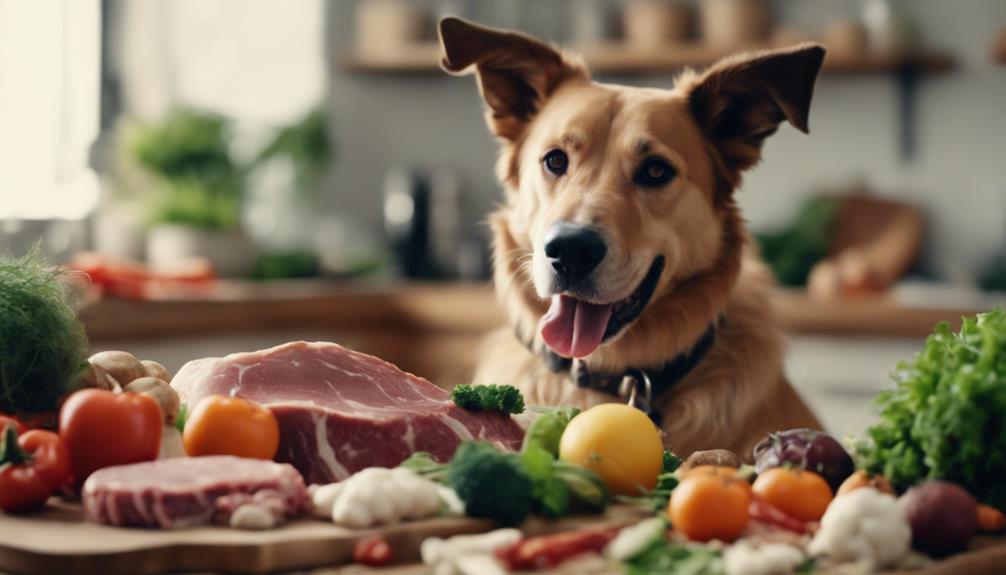
By feeding your dog a raw food diet, you can provide numerous health benefits that may include improved digestion and a shinier coat. Raw food diets often contain fewer additives and preservatives, which can be beneficial for dogs with sensitive stomachs. The natural enzymes present in raw foods can aid in the digestion process, leading to reduced bloating and gas.
Additionally, the high levels of essential fatty acids found in raw meats can contribute to a healthier skin and coat, making your dog's fur softer and shinier. Overall, a raw food diet can help your dog maintain a healthy weight, increase energy levels, and support a strong immune system. Making the switch could lead to a happier and healthier pup.
Risks to Consider
When considering feeding your dog a raw food diet, it's important to be aware of potential risks associated with this type of feeding regimen. Raw diets can contain harmful bacteria such as Salmonella and E. coli, which can lead to food poisoning in both dogs and humans. Nutritional imbalances may occur if the raw diet isn't properly formulated, potentially causing deficiencies or excess of certain nutrients.
Another risk is the possibility of your dog choking on bones or bone fragments. Additionally, bones in a raw diet can cause dental fractures or gastrointestinal obstructions. It's imperative to handle raw meat properly to prevent contamination and to consult with a veterinarian to make sure the diet meets your dog's nutritional needs.
Nutritional Requirements for Dogs
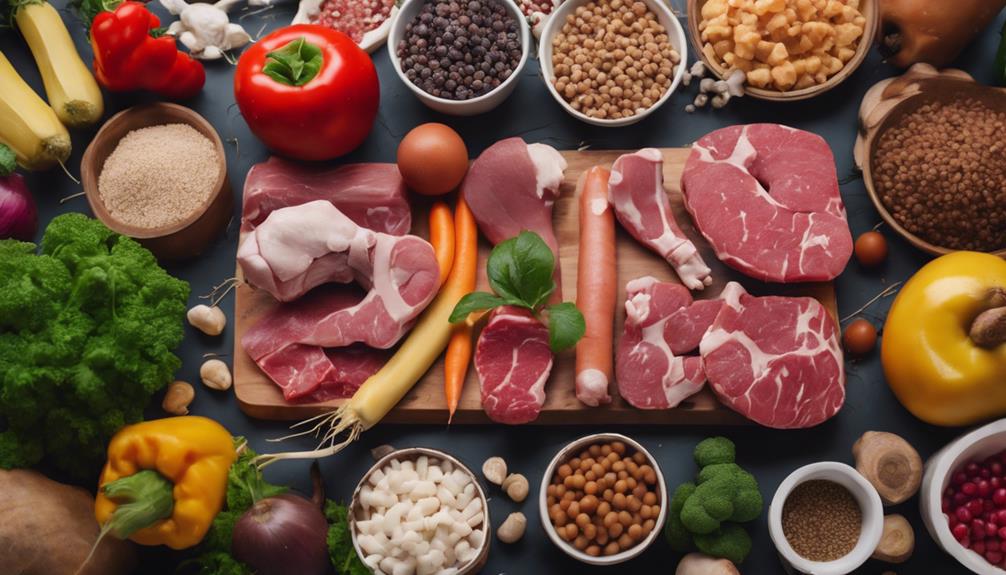
To guarantee your dog's health and well-being, it's vital to comprehend their specific nutritional requirements. Properly balancing their meals with essential nutrients is key to supporting their overall health.
Dog's Dietary Needs
Understanding the nutritional requirements for dogs is essential to guarantee their overall health and well-being. Dogs require a balanced diet that includes proteins, fats, carbohydrates, vitamins, and minerals. Providing your canine companion with a well-rounded meal plan ensures they receive the necessary nutrients for peak health. Below is a table summarizing the key nutritional needs of dogs:
| Nutrient | Function | Food Sources |
|---|---|---|
| Proteins | Build and repair tissues | Meat, fish, eggs |
| Fats | Energy source | Oils, meat, fish |
| Carbohydrates | Energy source | Grains, fruits, veggies |
| Vitamins | Regulate body processes | Fruits, veggies, organ meats |
| Minerals | Support various functions | Bones, supplements |
Balanced Meal Planning
Creating a balanced meal plan for your dog is vital for meeting their nutritional requirements and promoting peak health. Dogs need a mix of protein, fats, carbohydrates, vitamins, and minerals in their diet. Protein is essential for muscle development and should make up the majority of their diet.
Fats provide energy and support skin and coat health. Carbohydrates offer a source of quick energy. Including a variety of fruits and vegetables can provide essential vitamins and minerals. Consult with your veterinarian to determine the right balance for your dog's specific needs.
It's important to monitor your dog's weight, energy levels, and overall health to make sure the meal plan is meeting their requirements.
Types of Raw Food Options
Exploring various raw food options for your dog can greatly enhance their overall health and well-being. Here are some popular choices to ponder:
- Raw Meat: A foundation of any raw food diet for dogs, including options like beef, chicken, turkey, or lamb.
- Organ Meats: Rich in essential nutrients, such as liver, kidney, and heart, which are crucial for your dog's health.
- Raw Bones: Great for dental health and mental stimulation, providing calcium and other minerals.
- Fruits and Vegetables: Offer a variety of vitamins, minerals, and fiber, such as carrots, apples, and leafy greens, to complement the meat in your dog's diet.
Transitioning to Raw Food
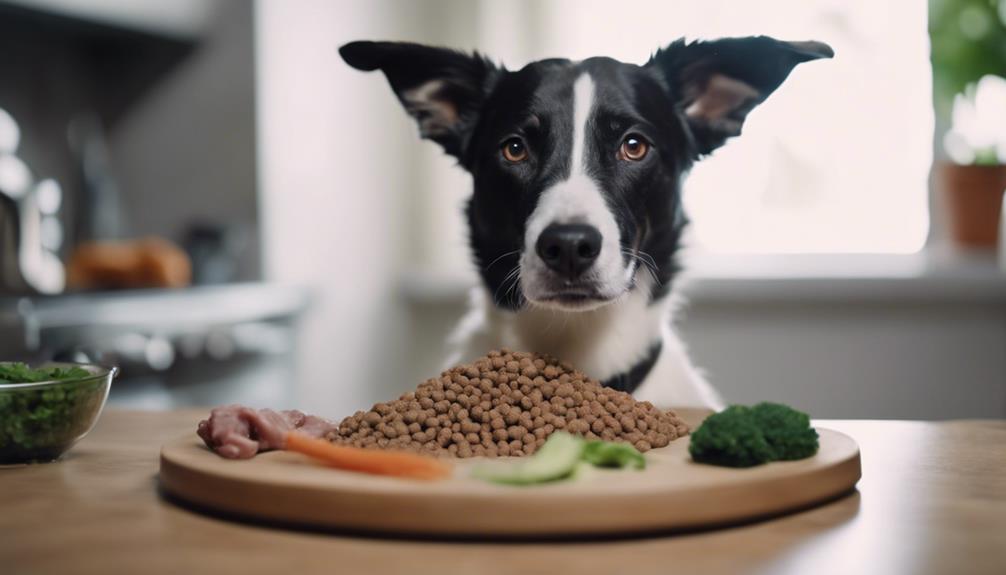
To smoothly switch your dog to a raw food diet, begin by gradually introducing small amounts of raw meat mixed with their regular food. This gradual change helps your dog's digestive system adapt to the new diet. Monitor their reaction and adjust the ratio of raw food to regular food accordingly. Below is a simple guide to help you shift your dog to a raw food diet:
| Day | Regular Food (%) | Raw Food (%) |
|---|---|---|
| Day 1 | 90 | 10 |
| Day 2-3 | 80 | 20 |
| Day 4-5 | 70 | 30 |
| Day 6-7 | 50 | 50 |
Meal Preparation Tips
For efficient meal preparation when shifting your dog to a raw food diet, consider incorporating a variety of meats and vegetables to guarantee a balanced and nutritious diet. To make the process smoother and more enjoyable, follow these tips:
- Meal Planning: Plan your dog's meals in advance to make sure they receive a variety of nutrients.
- Proper Storage: Store raw meat and vegetables separately to prevent cross-contamination.
- Portion Control: Measure the right portions based on your dog's size and activity level to avoid overfeeding.
- Rotation: Rotate different proteins and vegetables regularly to provide a wide range of nutrients and prevent boredom.
Safe Handling Practices
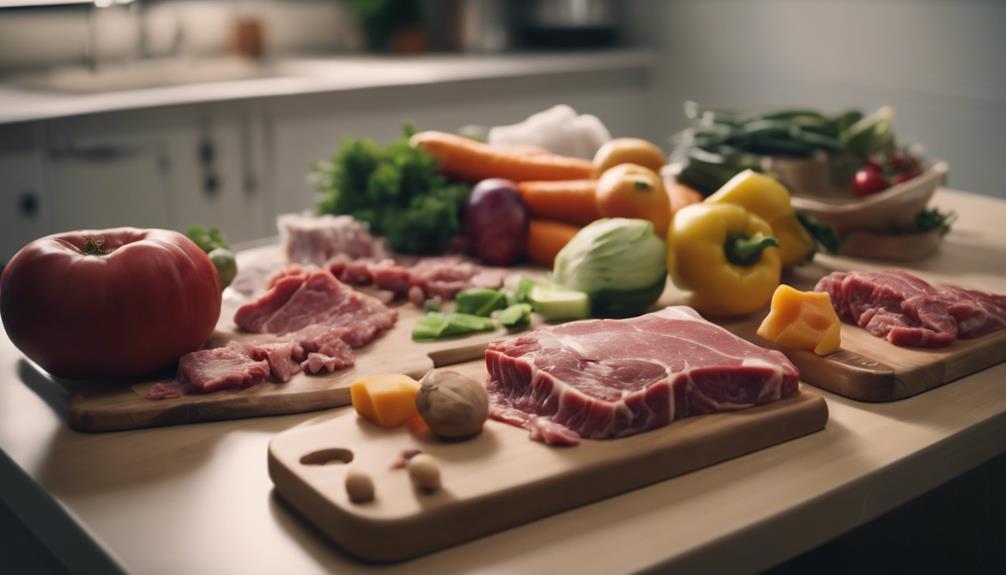
Guarantee the safety of both yourself and your dog by following proper handling practices when preparing raw food meals.
Always wash your hands thoroughly before and after handling raw meat to prevent the spread of bacteria. Use separate cutting boards and utensils for raw meat to avoid cross-contamination with other foods. Keep raw meat refrigerated until ready to use and thaw it in the refrigerator to prevent bacterial growth.
Clean all surfaces and utensils that come into contact with raw meat with hot, soapy water. Dispose of any leftover raw food promptly and securely to prevent your dog from accessing it.
Monitoring Your Dog's Health
When it comes to monitoring your dog's health after implementing a raw food diet, observe any changes in their energy levels and overall well-being. Here are four key points to help you keep track of your furry friend's health:
- Physical Appearance: Check for a shinier coat, healthier skin, and appropriate weight maintenance.
- Digestive Health: Monitor stool quality, looking for firmness and consistency.
- Behavioral Changes: Note any shifts in mood, activity levels, or signs of discomfort.
- Veterinary Visits: Regular check-ups are important to safeguard your dog's health and address any concerns promptly.
Conclusion
To sum up, feeding your dog a raw food diet can provide numerous health benefits, but it's important to be mindful of potential risks and nutritional requirements.
By exploring different types of raw food options, introducing gradually, and practicing safe handling and meal preparation, you can help guarantee your dog's well-being.
Monitor your furry friend's health and consult with a veterinarian to make the best choices for their diet.

If Richie Bedard is a dog food expert, author, or any other figure in the field of dog nutrition that emerged after September 2021,
